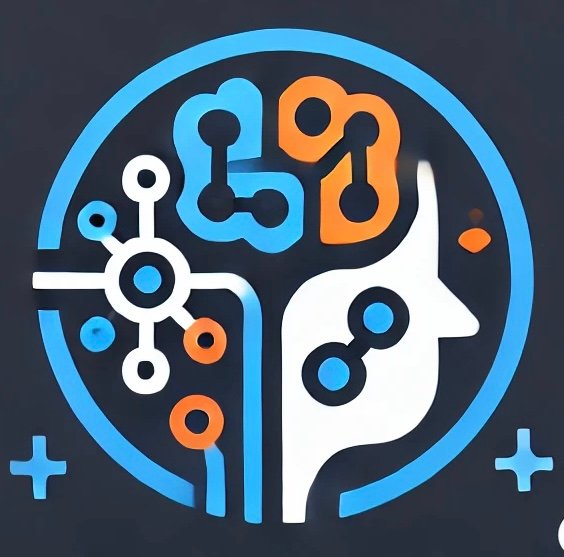Introduction

Cyber threats are evolving—so is AI. How is AI changing the game? As we navigate through 2025, the cybersecurity landscape continues to transform at an unprecedented pace. Sophisticated attacks that once took weeks to execute now unfold in seconds, leaving traditional security measures struggling to keep up. This is where artificial intelligence has stepped in, revolutionizing how organizations detect, prevent, and respond to cyber threats.
AI in cybersecurity isn’t just a trendy buzzword anymore—it’s become the backbone of modern security strategies. With cyber attacks becoming increasingly complex and frequent, organizations across all sectors are turning to AI-powered solutions to strengthen their digital fortifications. According to a recent report by Cybersecurity Ventures, global cybercrime costs are projected to reach $10.5 trillion annually by 2025, up from $3 trillion in 2015—a staggering increase that highlights the urgent need for more advanced security measures.
In this comprehensive guide, we’ll explore how AI is reshaping the cybersecurity landscape in 2025, from real-time threat detection to predictive analytics and automated security protocols. We’ll examine the key benefits and challenges of implementing AI in cybersecurity, dive into real-world applications across various industries, and provide practical steps for organizations looking to enhance their security posture with AI technologies.
Key takeaways from this article include:
- Understanding how AI augments traditional cybersecurity approaches
- Exploring the practical applications of AI in threat detection and prevention
- Learning about the challenges of AI implementation and how to overcome them
- Gaining insights into future trends and innovations in AI-driven security
Table of Contents
Background & Importance
What is AI in Cybersecurity?
AI in cybersecurity refers to the application of artificial intelligence technologies—including machine learning, deep learning, natural language processing, and neural networks—to identify, analyze, and respond to cyber threats more effectively than traditional software-driven approaches. These systems can process vast amounts of security data, recognize patterns that might indicate attacks, and either alert security professionals or automatically respond to threats in real-time.
Unlike conventional security tools that rely on predefined rules and signatures, AI-driven security solutions can adapt and learn from new data, making them particularly effective against novel and evolving threats. They can analyze network traffic, user behavior, and system activities to establish baselines of “normal” operations and flag anomalies that might represent security breaches or attack attempts.
Why AI is Essential for Modern Security Strategies
The cybersecurity landscape of 2025 demands more than just reactive measures. Here’s why AI has become essential:
- Volume and Velocity of Threats: Modern organizations face hundreds of thousands of security events daily. Human analysts simply cannot process this volume of data quickly enough to spot all potential threats.
- Sophistication of Attacks: Today’s cyber attackers use advanced techniques like polymorphic malware (which constantly changes its code to evade detection), fileless attacks, and AI-powered offensive tools. Defending against these requires equally sophisticated technology.
- Skills Gap: The cybersecurity industry continues to face a significant talent shortage. According to the International Information System Security Certification Consortium, there’s a global cybersecurity workforce gap of 3.5 million positions. AI helps bridge this gap by automating routine tasks and enhancing the capabilities of existing security teams.
- Speed of Response: When a breach occurs, every second counts. AI systems can identify and respond to threats in milliseconds, potentially containing an attack before significant damage occurs.
Key Statistics and Expert Insights
The growing importance of AI in cybersecurity is reflected in both market trends and expert opinions:
- According to Gartner research, by 2025, over 60% of organizations will use cybersecurity risk as a primary determinant in conducting third-party transactions and business engagements.
- A 2024 IBM Security study found that organizations using security AI and automation experienced breach costs that were nearly $3.1 million less than those without these technologies—a 42% cost difference.
- “AI is transforming cybersecurity from a reactive to a proactive discipline,” says Maya Rodriguez, Chief Information Security Officer at Global Finance Corp. “Organizations that fail to incorporate AI into their security framework will increasingly find themselves at a significant disadvantage against modern threat actors.”
- Research from MIT Technology Review indicates that AI-enhanced security systems can reduce the time to detect threats by up to 95% compared to traditional methods.
Key Benefits & Challenges
Top Benefits of AI in Cybersecurity
Real-time Threat Detection and Response
One of the most significant advantages of AI in cybersecurity is its ability to identify and respond to threats in real-time. Traditional security systems often rely on known signatures of previous attacks, making them ineffective against zero-day exploits and novel attack methods.
AI-driven systems, on the other hand, can detect unusual patterns and behaviors that might indicate a security breach, even if the specific attack signature isn’t in their database. For example, CrowdStrike’s Falcon platform uses AI to analyze over 1 trillion security events daily across its global customer base, identifying potential threats in milliseconds.
According to Microsoft’s Digital Defense Report, organizations using AI-powered security tools in 2024 reduced their time to detect threats by an average of 60%, with some reporting detection times of less than 10 seconds.
Automated Security Protocols and Compliance
AI systems can automate numerous security processes that traditionally required human intervention, from vulnerability assessments to patch management and compliance monitoring.
For instance, tools like Darktrace’s Enterprise Immune System automatically identify vulnerabilities in an organization’s network and can initiate containment measures without human input. This capability is particularly valuable during off-hours when security teams may not be actively monitoring systems.
Moreover, AI can help organizations maintain compliance with complex regulatory frameworks like GDPR, HIPAA, and emerging AI security regulations. IBM’s Watson for Cybersecurity, for example, can continuously monitor systems for compliance violations and generate detailed reports for auditors, significantly reducing the administrative burden on security teams.
Enhanced Predictive Analytics for Cyber Threat Prevention
Perhaps the most revolutionary aspect of AI in cybersecurity is its predictive capabilities. By analyzing historical data and current trends, AI systems can forecast potential security vulnerabilities and attack vectors before they’re exploited.
Cylance (now part of BlackBerry) uses machine learning algorithms to predict and prevent malware attacks with remarkable accuracy. Their predictive models can identify malicious files with a 99.1% success rate, often catching threats that traditional antivirus programs miss entirely.
Similarly, Recorded Future’s Intelligence Platform leverages AI to analyze data from across the web, including the dark web, to predict emerging threats and provide organizations with actionable intelligence to strengthen their defenses proactively.
Reduction in False Positives
False positives—alerts triggered by legitimate activities mistakenly identified as threats—have long been a major challenge in cybersecurity. They waste valuable time and resources as security teams investigate non-existent issues, and can lead to “alert fatigue” where analysts begin to ignore warnings.
AI significantly reduces false positives by learning from previous analyses and continuously refining its detection algorithms. According to a study by Ponemon Institute, organizations using AI-driven security tools reported a 60% reduction in false positives compared to traditional security information and event management (SIEM) systems.
FireEye’s Helix platform, for instance, combines machine learning with expert human analysis to provide high-fidelity alerts, reducing false positives by up to 90% compared to conventional security tools.
Cost Savings and Efficiency Improvements
Despite the initial investment required, AI in cybersecurity ultimately delivers significant cost savings through:
- Automation of routine security tasks
- Faster incident detection and response, reducing breach costs
- More efficient allocation of security personnel
- Reduced downtime and business disruption
A 2024 Accenture report found that organizations implementing AI-driven security solutions achieved an average 27% reduction in overall security costs within two years, while simultaneously improving their security posture.
Common Challenges & How to Overcome Them
AI Biases and False Positives
Despite improvements, AI systems can still develop biases based on their training data, potentially leading to blind spots in threat detection or persistent false positives for certain types of legitimate activities.
How to overcome this challenge:
- Regularly update and diversify training data
- Implement human oversight of AI decision-making
- Use multiple AI models with different approaches to cross-validate findings
- Continuously test AI systems against new and evolving threats
Organizations like Google are addressing this through their MLSEC project, which specifically focuses on reducing biases in security-focused machine learning models.
High Implementation Costs and Resource Requirements
Implementing AI in cybersecurity often requires significant upfront investment in technology, infrastructure, and expertise, which can be prohibitive for smaller organizations.
How to overcome this challenge:
- Start with cloud-based AI security solutions that require less upfront investment
- Implement AI gradually, focusing first on areas with the highest security ROI
- Consider managed security service providers (MSSPs) that offer AI capabilities
- Take advantage of open-source AI security tools like OWASP’s AI Security Project
Companies like Arctic Wolf offer security operations center (SOC)-as-a-service solutions that provide AI-driven security capabilities at a fraction of the cost of building in-house systems.
Data Privacy Concerns and Regulatory Compliance
AI security systems typically require access to vast amounts of data, raising concerns about privacy and regulatory compliance, especially under frameworks like GDPR, CCPA, and industry-specific regulations.
How to overcome this challenge:
- Implement strong data governance policies
- Use anonymization and pseudonymization techniques
- Deploy edge computing solutions that keep sensitive data local
- Choose AI security vendors with strong privacy commitments and compliance certifications
Microsoft’s Sentinel platform, for example, includes specific privacy-preserving features designed to help organizations maintain compliance while benefiting from AI-driven security analysis.
Dependency on Data Quality and Availability
The effectiveness of AI in cybersecurity is directly tied to the quality and comprehensiveness of the data it’s trained on. Incomplete or low-quality data can significantly reduce AI performance.
How to overcome this challenge:
- Implement robust data collection and normalization processes
- Use data validation techniques to ensure accuracy
- Supplement internal data with threat intelligence feeds
- Participate in industry information-sharing initiatives
The Cyber Threat Alliance, a nonprofit organization founded by leading cybersecurity companies, facilitates the sharing of threat intelligence data to improve the quality and breadth of information available for training AI systems.
Real-World Use Cases & Applications
AI-driven Malware Detection and Prevention
Traditional signature-based antivirus solutions struggle to keep pace with the rapid evolution of malware. Modern threats often use polymorphic code that constantly changes to evade detection, or fileless techniques that leave minimal traces on infected systems.
AI-based solutions approach malware detection differently, analyzing the behavior and characteristics of files rather than relying solely on known signatures. For example, Deep Instinct uses deep learning to prevent malware infections with a remarkable 99% accuracy rate, even for previously unseen threats.
In a notable case study, SentinelOne protected a global financial institution from a sophisticated ransomware attack that had evaded traditional security measures. Their AI engine identified unusual encryption activities within microseconds of the attack’s initiation and automatically isolated affected systems before the malware could spread, saving the organization an estimated $15 million in potential damages.
Behavioral Analytics for Fraud Detection
AI excels at establishing behavioral baselines for users, systems, and networks, then identifying deviations that might indicate security breaches or fraudulent activities.
For instance, PayPal uses machine learning models to analyze over 1.1 billion daily transactions, comparing each against historical patterns to flag potential fraud. This approach has reduced PayPal’s fraud rate to just 0.32% of total payment volume—significantly below the industry average.
Similarly, Mastercard’s Decision Intelligence platform uses AI to evaluate transaction data in real-time, reducing false declines by 50% while still effectively blocking fraudulent transactions. The system examines over 200 data points for each transaction, making decisions in milliseconds that would be impossible for human analysts. AI-powered Security Monitoring in Enterprises
AI-powered Security Monitoring in Enterprises
Large enterprises face unique cybersecurity challenges due to their complex IT environments, numerous access points, and the sheer volume of data flowing through their networks. AI has become essential for effective security monitoring in these environments.
Cisco’s Stealthwatch uses machine learning to establish normal network traffic patterns and identify anomalies that might indicate security breaches. When deployed at a major healthcare provider with over 200 facilities, the system detected a data exfiltration attempt that traditional security tools had missed, preventing the theft of sensitive patient information.
Another example comes from Microsoft, whose Azure Sentinel platform uses AI to correlate security events across an organization’s entire digital estate. When implemented at a global manufacturing firm, Sentinel identified a coordinated attack that was exploiting vulnerabilities across multiple systems—something the company’s previous SIEM solution had failed to detect as a unified campaign.
Cybersecurity Automation in Financial Services
The financial sector has been at the forefront of adopting AI for cybersecurity, driven by both the high value of potential targets and strict regulatory requirements.
JPMorgan Chase employs an AI system called COiN (Contract Intelligence) that reviews legal documents and extracts important data, significantly reducing the risk of human error in compliance processes. The system can review 12,000 annual commercial credit agreements in seconds, a task that previously consumed approximately 360,000 hours of work by lawyers and loan officers.
Meanwhile, Goldman Sachs has developed an AI-powered system called Sentinel that monitors emails and chats for potential compliance violations and security risks. The system processes over 75 million communications daily, identifying potential issues that would be impossible for human compliance officers to catch.
Government and Military AI Cybersecurity Strategies
Government and military organizations face some of the most sophisticated cyber threats, often from state-sponsored actors with significant resources. These entities are increasingly turning to AI to bolster their defenses.
The U.S. Department of Defense’s Project Maven uses machine learning algorithms to analyze drone footage and other intelligence data, helping to identify security threats more quickly and accurately. Similar AI technologies are being adapted for cybersecurity applications within military networks.
In the United Kingdom, the National Cyber Security Centre (NCSC) has developed an AI system called Logging Made Easy that helps government departments detect and respond to cyber attacks. The system has successfully identified several advanced persistent threats that targeted government networks.
According to a report by the Center for Strategic and International Studies, over 30 countries now have formal military AI strategies that include significant cybersecurity components.
Expert Insights & Thought Leadership
Quotes from Cybersecurity and AI Thought Leaders
“We’re entering an era where AI isn’t just a tool in the cybersecurity arsenal—it’s becoming the foundation upon which effective security strategies are built. Organizations that fail to leverage these capabilities will find themselves at a severe disadvantage against increasingly sophisticated threat actors.” — Dr. Jennifer Chen, Chief Research Officer at the Cybersecurity AI Institute
“The most significant shift we’re seeing in 2025 is not just AI’s ability to detect threats, but its growing capability to understand the broader context of attacks. Modern AI security systems don’t just tell you what’s happening; they tell you why it matters to your specific organization and how it relates to your business risk.” — Marcus Jackson, CISO of Global Banking Corporation
“Cybersecurity AI is following the same adoption curve we’ve seen with other transformative technologies. We’re moving from the early adopter phase into mainstream implementation, and the organizations that have already built expertise in this area have a substantial competitive advantage.” — Sophia Williams, VP of AI Strategy at Palo Alto Networks
Comparison of AI-driven vs. Traditional Cybersecurity Measures
| Aspect | Traditional Cybersecurity | AI-Driven Cybersecurity |
| Threat Detection | Rule-based, signature-dependent | Pattern recognition, behavioral analysis |
| Response Time | Minutes to hours | Seconds to milliseconds |
| Adaptability | Requires manual updates | Continuously learns and improves |
| False Positives | High rate (often >40%) | Significantly reduced (<10%) |
| Zero-Day Protection | Limited to none | Moderate to strong |
| Scalability | Requires proportional increase in resources | Scales efficiently with growing data volumes |
| Analyst Workload | High, many alerts to triage | Reduced, focusing on verified threats |
| Cost Efficiency | Increasing costs as threats multiply | Initial investment but lower operational costs |
A 2024 study by Forrester Research found that organizations transitioning from traditional to AI-driven security approaches experienced:
- 76% reduction in security incidents
- 83% faster threat detection and response
- 65% decrease in security operations costs over three years
Industry-specific Insights on AI Adoption
Healthcare
The healthcare sector has been particularly aggressive in adopting AI for cybersecurity, driven by the high value of patient data and the potential impact of breaches on patient safety.
“Healthcare organizations are unique in that a security breach can directly impact human lives,” explains Dr. Robert Torres, CISO at National Hospital Systems. “We’ve implemented AI security solutions that specifically understand medical device behavior and can detect anomalies that might indicate tampering or unauthorized access to life-supporting equipment.”
A report by Healthcare Information and Management Systems Society (HIMSS) indicates that 78% of healthcare organizations now use some form of AI in their cybersecurity operations, with 92% planning to increase their investments in 2025.
Financial Services
Financial institutions face some of the most persistent and sophisticated cyber threats, making them early adopters of AI security technologies.
“The financial sector’s approach to AI in cybersecurity has evolved from viewing it as an experimental technology to treating it as a mission-critical capability,” notes Eliza Washington, Cybersecurity Director at International Banking Association. “The institutions seeing the most success are those that have integrated AI throughout their security operations rather than treating it as a separate capability.”
According to Deloitte’s Banking Security Survey, financial institutions using advanced AI for fraud detection report 47% fewer successful attacks and 62% lower fraud losses compared to those using conventional security measures.
Manufacturing and Critical Infrastructure
The manufacturing sector, particularly industrial control systems and critical infrastructure, presents unique cybersecurity challenges that AI is increasingly helping to address.
“Traditional IT security tools often don’t translate well to operational technology environments,” explains Carlos Menendez, Industrial Cybersecurity Advisor at Manufacturing Security Alliance. “We’re seeing significant progress with AI systems specifically designed to understand industrial protocols and equipment behavior, providing security without disrupting critical operations.”
A notable example is Dragos’s industrial cybersecurity platform, which uses machine learning to baseline normal operations in manufacturing environments and detect potential intrusions without requiring changes to existing equipment.
Step-by-Step Guide: Implementing AI in Cybersecurity
Step 1: Assessing Cybersecurity Needs and Risks
Before implementing AI security solutions, organizations should conduct a comprehensive assessment of their current security posture and specific needs:
- Inventory digital assets and data: Identify and classify all systems, applications, and data according to sensitivity and business importance.
- Conduct a threat assessment: Analyze your organization’s specific threat landscape, including industry-specific threats and attacker profiles.
- Evaluate current security controls: Assess the effectiveness of existing security measures and identify gaps that AI could potentially address.
- Define security objectives: Establish clear goals for your AI implementation, such as reducing detection time, automating responses, or improving threat hunting capabilities.
- Calculate potential ROI: Estimate the financial impact of security breaches and the potential savings from improved threat detection and response.
Tools like the NIST Cybersecurity Framework and the CIS Critical Security Controls provide structured approaches for this assessment phase.
Step 2: Choosing the Right AI Security Tools and Solutions
With your needs assessment complete, the next step is selecting appropriate AI security technologies:
- Determine priority use cases: Focus initial implementation on areas with the highest security ROI, such as email security, endpoint protection, or network monitoring.
- Evaluate solution types:
- Security information and event management (SIEM) platforms with AI capabilities (e.g., IBM QRadar, Splunk Enterprise Security)
- Endpoint detection and response (EDR) tools (e.g., CrowdStrike Falcon, SentinelOne)
- User and entity behavior analytics (UEBA) solutions (e.g., Exabeam, Gurucul)
- Network traffic analysis tools (e.g., Darktrace, Vectra AI)
- Cloud security platforms (e.g., Wiz, Orca Security)
- Consider deployment models: Evaluate cloud-based, on-premises, and hybrid solutions based on your organization’s data sensitivity, compliance requirements, and existing infrastructure.
- Assess vendor expertise: Look for vendors with proven experience in both cybersecurity and artificial intelligence, with a track record of continuous innovation.
- Test before committing: Whenever possible, conduct proof-of-concept deployments to validate effectiveness in your specific environment.
Gartner’s Magic Quadrant reports for various security categories can provide valuable guidance during the vendor selection process.
Step 3: Integrating AI with Existing Security Infrastructure
Successful AI implementation requires thoughtful integration with your existing security ecosystem:
- Map data sources and feeds: Identify all security data sources that will feed into your AI system, including logs, alerts, threat intelligence, and contextual business data.
- Develop integration architecture: Design how AI solutions will connect with existing security tools, often through APIs, SIEM integration, or security orchestration platforms.
- Establish data normalization processes: Ensure data from diverse sources is standardized in a format the AI can effectively analyze.
- Create workflow integration: Define how AI-generated insights and alerts will flow into security operations processes and existing incident response workflows.
- Implement in phases: Start with monitoring-only mode before enabling automated response capabilities, allowing the system to learn and security teams to build trust.
Platforms like Palo Alto Networks’ Cortex XSOAR and Swimlane can help orchestrate the integration of AI capabilities with existing security processes.
Step 4: Continuous Monitoring and Adapting to Evolving Threats
AI security is not a “set and forget” technology—it requires ongoing attention to maintain effectiveness:
- Establish performance metrics: Define KPIs to measure the effectiveness of your AI security implementation, such as mean time to detect (MTTD), false positive rates, and security analyst productivity.
- Implement feedback loops: Create mechanisms for security analysts to provide feedback on AI-generated alerts to improve system accuracy over time.
- Regularly update training data: Ensure your AI systems have access to the latest threat intelligence and security data to learn from.
- Conduct periodic red team exercises: Test your AI security capabilities against simulated attacks to identify weaknesses and improvement opportunities.
- Stay current with threat landscape: Monitor emerging attack techniques and ensure your security team understands how they might affect your AI security tools.
Regular security posture assessments using frameworks like MITRE ATT&CK can help identify gaps in your AI security coverage.
Step 5: Ensuring Compliance with AI and Data Security Regulations
AI security implementations must navigate an increasingly complex regulatory landscape:
- Identify applicable regulations: Determine which data protection and AI governance regulations apply to your organization (e.g., GDPR, CCPA, AI Act, vertical-specific regulations).
- Implement privacy-by-design principles: Ensure AI security solutions respect data minimization, purpose limitation, and other privacy principles.
- Establish explainability mechanisms: Document how your AI security systems make decisions, particularly for high-impact actions like account lockouts or network isolation.
- Develop audit trails: Implement comprehensive logging of AI security decisions and actions to support compliance verification and incident investigations.
- Review vendor compliance: Ensure your AI security vendors maintain appropriate certifications (e.g., SOC 2, ISO 27001) and contractual commitments to support your compliance obligations.
The NIST AI Risk Management Framework provides valuable guidance for ensuring AI systems are deployed responsibly in security contexts.
Common Myths & Misconceptions
Myth #1 – AI Can Replace Human Cybersecurity Experts
Perhaps the most pervasive myth surrounding AI in cybersecurity is that these technologies will eventually replace human security professionals entirely. This misconception stems from both hype around AI capabilities and misunderstanding of the nuanced nature of cybersecurity work.
The reality: AI is a powerful force multiplier for security teams, not a replacement for human expertise. While AI excels at processing vast amounts of data, identifying patterns, and automating routine tasks, it lacks the contextual understanding, creative thinking, and ethical judgment that human security professionals bring to the table.
“The most effective cybersecurity approaches combine the computational power of AI with human creativity and insight,” explains Dr. Alisha Patel, Director of Security Research at Northeastern University. “AI can process terabytes of log data in seconds, but humans still excel at understanding the broader business context, anticipating novel attack vectors, and making nuanced decisions about security trade-offs.”
Organizations achieving the greatest security success are those that strategically reallocate human resources to focus on tasks that require judgment and creativity, while leveraging AI for data-intensive monitoring and analysis.
Myth #2 – AI in Cybersecurity is 100% Foolproof
Another common misconception is that implementing AI security solutions creates an impenetrable defense against all cyber threats.
The reality: While AI significantly enhances security capabilities, no security technology is infallible. Sophisticated attackers are already developing techniques specifically designed to evade AI detection, including:
- Adversarial machine learning attacks that manipulate inputs to confuse AI models
- Poisoning attacks that corrupt training data to introduce blind spots
- Evasion techniques that mimic legitimate user behavior to avoid detection
“AI security tools represent a substantial advancement, but they’re not magic,” cautions William Thornton, founder of Secure AI Initiative. “They require proper implementation, regular updating, and human oversight to remain effective against evolving threats.”
Organizations should view AI as one layer in a comprehensive defense-in-depth strategy, not as a silver bullet that eliminates all security risks.
Myth #3 – Only Large Enterprises Benefit from AI Security
Many smaller organizations assume that AI security solutions are exclusively for large enterprises with substantial security budgets and dedicated data science teams.
The reality: While early AI security solutions were indeed enterprise-focused, the market has evolved significantly. Today, organizations of all sizes can benefit from AI-enhanced security through:
- Cloud-based security services with embedded AI capabilities
- Managed security service providers (MSSPs) offering AI-powered monitoring
- Security products with pre-trained AI models that require minimal configuration
- Industry-specific AI security solutions designed for smaller organizations
BitDefender’s GravityZone, for example, offers AI-powered endpoint protection specifically designed for small and medium businesses, with pricing models and deployment options tailored to organizations with limited IT resources.
“The democratization of AI security is one of the most important trends in our industry,” notes Maria Gonzalez, cybersecurity analyst at SMB Security Alliance. “We’re seeing solutions that package sophisticated machine learning capabilities in accessible, affordable formats that don’t require data science expertise to implement and maintain.”
A 2024 study by CompTIA found that 64% of small businesses using AI-enhanced security tools reported significant improvements in their security posture, with 72% stating the investment was more affordable than they initially expected.
Future Trends & Predictions
AI’s Role in the Future of Cybersecurity
As we look beyond 2025, several trends are emerging that will shape how AI continues to transform cybersecurity:
Autonomous Security Operations: The security operations center (SOC) of the future will be increasingly autonomous, with AI systems handling routine monitoring, triage, and response without human intervention. Human analysts will focus on strategy, oversight, and handling complex security incidents.
According to Gartner projections, by 2027, more than 30% of enterprise SOCs will operate with full AI autonomy for routine security operations, compared to less than 5% in 2023.
Predictive Defense Evolution: AI security systems will move from primarily reactive to predominantly predictive, identifying potential vulnerabilities and attack vectors before they’re exploited. This shift will be enabled by advances in causal inference and explainable AI that allow systems to reason about potential future scenarios rather than simply extrapolating from past data.
Defensive-Offensive AI Collaboration: Security teams will increasingly deploy defensive AI systems that actively learn from and adapt to offensive AI tools used by attackers, creating a more dynamic and resilient security posture.
Growth of Autonomous Security Systems
The autonomous security market is experiencing explosive growth, with Markets and Markets research projecting a CAGR of 31.2% between 2024 and 2029. This growth is driven by several factors:
Self-healing networks: Next-generation network infrastructure will incorporate AI capabilities that automatically detect and remediate security issues without human intervention. Cisco’s self-healing network architecture, for example, can automatically isolate compromised devices and reroute traffic to maintain operations during an attack.
Continuous security validation: Autonomous security testing platforms like AttackIQ and Cymulate are evolving to continuously probe defenses, identify weaknesses, and automatically implement or recommend fixes.
Zero-trust verification: AI is becoming central to zero-trust architectures, continuously verifying user identities and device security postures without introducing friction to legitimate users.
“The autonomous security systems we’ll see by 2027 will operate at a speed and scale that would be impossible for human-centered operations,” predicts Thomas Nakahara, Research Director at Autonomous Security Institute. “These systems will move beyond simple rule execution to making nuanced security decisions based on a holistic understanding of the environment and threat context.”
Ethical and Regulatory Developments in AI Security
As AI becomes more central to cybersecurity, ethical and regulatory considerations are gaining prominence:
AI Security Accountability: Emerging regulations like the EU AI Act include specific provisions for high-risk AI systems used in critical infrastructure protection, including many cybersecurity applications. These regulations will require greater transparency, human oversight, and demonstrable risk management.
Ethical Red Teaming: Organizations are developing ethical frameworks for using offensive AI in security testing, establishing boundaries to ensure these powerful tools don’t create unintended harm or privacy violations.
Global Standards Emergence: International standards bodies, including ISO and NIST, are developing specific standards for AI in cybersecurity, addressing issues like bias mitigation, minimum performance requirements, and governance frameworks.
“We’re entering a phase where the regulatory framework for AI security is being established,” notes Dr. Elena Washington, Chair of the International AI Security Ethics Committee. “Organizations that proactively address ethical considerations in their AI security implementations will be better positioned both competitively and from a compliance perspective.”
Innovations in AI-driven Security Technologies
Several cutting-edge technologies are poised to further transform AI-powered cybersecurity:
Quantum-resistant AI: As quantum computing advances threaten current encryption standards, AI systems are being developed to identify vulnerable cryptographic implementations and recommend quantum-resistant alternatives. Google’s Post-Quantum Cryptography project is exploring how AI can help organizations transition to quantum-safe security standards.
Federated learning for security: This approach allows AI models to learn from data across multiple organizations without sharing the underlying sensitive data, enabling more robust threat detection while preserving privacy. The OpenFHE project is developing open-source tools to make federated learning more accessible for security applications.
Neural-symbolic reasoning: Combining neural networks with symbolic AI enables security systems to leverage both data-driven learning and rule-based reasoning, potentially addressing current limitations in anomaly detection and attack attribution.
Bio-inspired security architectures: Drawing inspiration from biological immune systems, researchers are developing security frameworks that adapt and evolve in response to new threats, establishing a form of digital immunity. Darktrace’s “Enterprise Immune System” exemplifies this approach, using unsupervised machine learning to establish a sense of “self” for an organization’s digital environment.
Conclusion & Call to Action
As we’ve explored throughout this article, AI is fundamentally reshaping cybersecurity in 2025 and beyond. From real-time threat detection and automated response to predictive defense and context-aware security analytics, artificial intelligence has become an essential component of modern security strategies across organizations of all sizes and industries.
The key takeaways from our exploration include:
- AI transforms cybersecurity from a predominantly reactive discipline to one that can anticipate and prevent threats before they materialize
- The most effective security approaches combine AI’s computational power with human judgment and expertise
- AI security implementation requires careful planning, integration with existing systems, and ongoing monitoring
- Organizations of all sizes can benefit from AI-enhanced security through various deployment models
- The future of cybersecurity will see increasingly autonomous systems operating at machine speed
As cyber threats continue to evolve in sophistication and scale, the organizations that successfully leverage AI will gain significant advantages in their security posture, operational efficiency, and resilience against attacks.
Whether you’re just beginning your AI security journey or looking to enhance existing capabilities, now is the time to explore how these technologies can strengthen your organization’s defenses. Consider starting with a security assessment to identify areas where AI could deliver the greatest impact, and explore pilot projects to build expertise and demonstrate value.
For more insights into the practical implementation of AI security solutions, check out our related articles:
- “Top AI Cybersecurity Tools for 2025”
- “Building an AI-Enhanced Security Operations Center”
- “AI Security Implementation: Lessons from the Field”
The cybersecurity landscape will continue to transform rapidly, but one thing is certain: artificial intelligence will play an increasingly central role in protecting our digital assets, infrastructure, and privacy in the years ahead.
- Best AI Tools for Career Growth in 2025: Top Picks for Successhttps://untechaihub.com/ai-tools-for-career-growth-2025/




